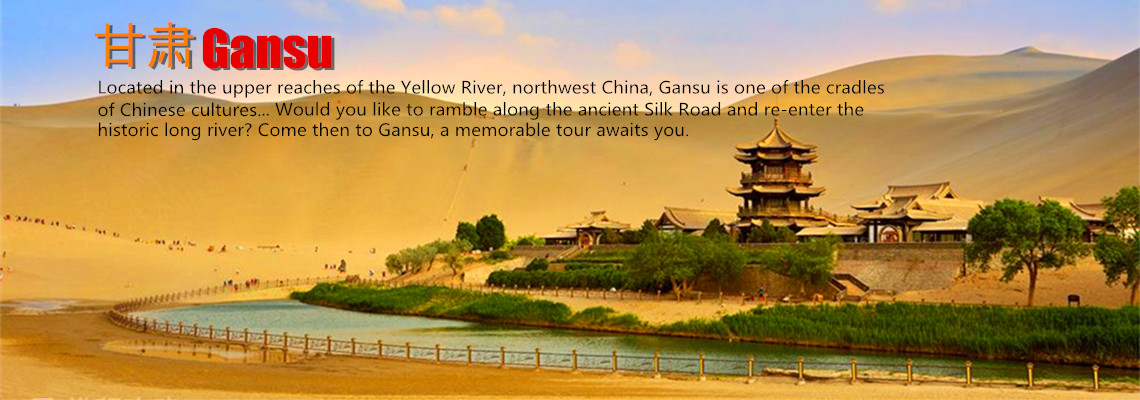
Gannan Travel Guide
Gannan Tibetan Autonomous Prefecture is one of the 10 Tibetan autonomous prefectures in China. It's located on the northeast edge of the Qing-Tibetan Plateau, 1,100 to 4,900 meters above sea level. Its average altitude is over 3,000 meters. The Gannan Tibetan autonomous prefecture was founded in 1953 with seven counties and one city. 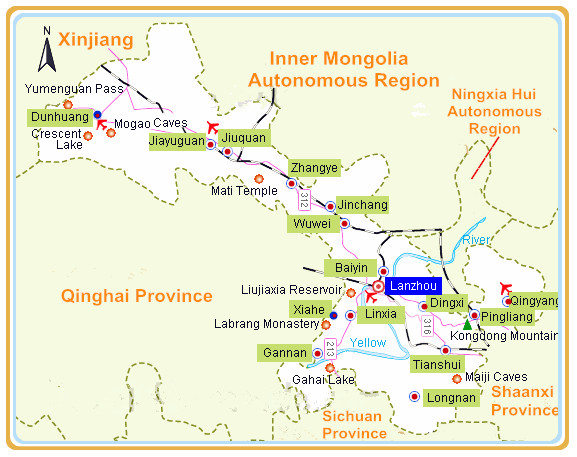 In 2011, the Gannan Tibetan autonomous prefecture had a total population of 730,700 and 24 ethnic groups. The ethnic Tibetan population of 395,900 account for 54.2 percent of the total. The city of Hezuo, capital of the Gannan Tibetan autonomous prefecture, sits 2,960 meters above sea level.
In 2011, the Gannan Tibetan autonomous prefecture had a total population of 730,700 and 24 ethnic groups. The ethnic Tibetan population of 395,900 account for 54.2 percent of the total. The city of Hezuo, capital of the Gannan Tibetan autonomous prefecture, sits 2,960 meters above sea level.
Facts of Gannan
Full Name: Gannan Tibetan Autonomous Prefecture
Chinese Name: 甘南藏族自治州 (gān nán zàng zú zì zhì zhōu)
Population: 682,900
Area: 45,000 square kilometers
Nationalities: Tibetan, Han
Administrative Division: 7 counties: Lintan, Zhuoni (Jone), Luqu, Maqu, Diebu (Tewo), Zhouqu, Xiahe; 1 county-level city (Hezuo)
Seat of the Prefectural Government: Renmin Jie, Hezuo City
History of Gannan
Before the Qin State in the Spring and Autumn Period (770BC-476BC) partly governed this area, Gannan was the domain of the ancient Qiang (later Tibetan) people, being one of the main birthplaces and residential areas of the Qiangs. It was in the year of 111AD that the Han Dynasty (206BC-220AD) brought Gannan into the feudal regime of Central China. It has played an important role in proving the relationship between the Han and the Tibetan. The south of the Silk Road and the Tang-Tibet Ancient Road all passed through this region. In 1954, the Gannan Tibetan Autonomous Prefecture was established with Hezuo City as its capital.
What to see in Gannan?
Gannan prefecture lies in the northeast fringe of the Qinghai-Tibet Plateau at the transition area to the Loess Plateau. The terrain slopes from the northwest to the southeast. It can be divided into three parts: the southern mountainous region with moderate climate, being an important forest zone in Gansu; the eastern hilly area and the eastern meadows and grassland, being the main pasturing area of the province. The good ecological environment of the Gannan Tibetan autonomous prefecture provides the region with beautiful natural landscapes, rich nationality characteristics and special folk customs. This region is also an important part of the ancient Silk Road known as Tangfan Ancient Road. There are 14 national-level scenic spots in the autonomous prefecture, which receive 2.44 million domestic and international tourists each year. Here lists top attractions in Gannan.
When to visit Gannan?
Gannan has a continental plateau climate, featuring high altitude, humid and cold weather. The temperature varies greatly during the day but slightly among four seasons. Its annual average temperature falls around 1 C-13
C-13 C .
C .
June to August is the best time to visit. The temperature in this period maintains a level of 15 C-30
C-30 C. The grassland scenery is at its best at this time. In winter, monasteries, no matter whether they are big or small, hold Buddhist ceremonies during the period from the eighth to the sixteenth day of the first lunar month. This is the busiest period.
C. The grassland scenery is at its best at this time. In winter, monasteries, no matter whether they are big or small, hold Buddhist ceremonies during the period from the eighth to the sixteenth day of the first lunar month. This is the busiest period.
How to get to Gannan?
Lanzhou is the main transfer station for south and southeast Gansu, whether by air, by train or by bus. Buses are the only vehicles to get in and out of Gannan. Visitors can find these buses at the New Lanzhou South Bus Station at the junction of No.212 National Highway and Lanzhou-Lintao (Dingxi City) Expressway.
In addition, buses to Xiahe County, Langmu Monastery, Maqu County, Diebu (Tewo) County are available in the south bus station in Lanzhou. As the seat of the prefecture government, Hezuo City has many regular buses to surrounding regions, such as Lanzhou, Linxia Hui Autonomous Prefecture, Dingxi City, Aba of Sichuan Province and Xining of Qinghai Province. The bus station is located in Xiyi Lu.
Gannan Tarvel Tips
Local Highlights: Xiangbala Tourism Arts Festival, held annually in midsummer, is the largest comprehensive tourism festival in Gannan Prefecture. During the fifth and the sixth lunar months, there are various festivals and ceremonies, such as Xianglang Festival, Erecting Arrow Festival and Caihua (Flower Picking) Festival.
Local Festivals: Apart from the traditional Tibetan festivals, it also has some special festivals for monasteries. For those who are interested in these Buddhist ceremonies, visitors can visit the Labrang Monastery during the third lunar month.
Special Local Products: Tibetan souvenirs, such as ornaments, embroidery, Tibetan herbs, silver wares, religious handicrafts
Useful Telephone Numbers:
Tourist Complaints: 0941-8212567
Weather Forecast: 121
Zip Code Inquiry: 184
China Post Branch: No.104, Renmin Jie, Hezuo City
 In 2011, the Gannan Tibetan autonomous prefecture had a total population of 730,700 and 24 ethnic groups. The ethnic Tibetan population of 395,900 account for 54.2 percent of the total. The city of Hezuo, capital of the Gannan Tibetan autonomous prefecture, sits 2,960 meters above sea level.
In 2011, the Gannan Tibetan autonomous prefecture had a total population of 730,700 and 24 ethnic groups. The ethnic Tibetan population of 395,900 account for 54.2 percent of the total. The city of Hezuo, capital of the Gannan Tibetan autonomous prefecture, sits 2,960 meters above sea level.Facts of Gannan
Full Name: Gannan Tibetan Autonomous Prefecture
Chinese Name: 甘南藏族自治州 (gān nán zàng zú zì zhì zhōu)
Population: 682,900
Area: 45,000 square kilometers
Nationalities: Tibetan, Han
Administrative Division: 7 counties: Lintan, Zhuoni (Jone), Luqu, Maqu, Diebu (Tewo), Zhouqu, Xiahe; 1 county-level city (Hezuo)
Seat of the Prefectural Government: Renmin Jie, Hezuo City
History of Gannan
Before the Qin State in the Spring and Autumn Period (770BC-476BC) partly governed this area, Gannan was the domain of the ancient Qiang (later Tibetan) people, being one of the main birthplaces and residential areas of the Qiangs. It was in the year of 111AD that the Han Dynasty (206BC-220AD) brought Gannan into the feudal regime of Central China. It has played an important role in proving the relationship between the Han and the Tibetan. The south of the Silk Road and the Tang-Tibet Ancient Road all passed through this region. In 1954, the Gannan Tibetan Autonomous Prefecture was established with Hezuo City as its capital.
What to see in Gannan?
Gannan prefecture lies in the northeast fringe of the Qinghai-Tibet Plateau at the transition area to the Loess Plateau. The terrain slopes from the northwest to the southeast. It can be divided into three parts: the southern mountainous region with moderate climate, being an important forest zone in Gansu; the eastern hilly area and the eastern meadows and grassland, being the main pasturing area of the province. The good ecological environment of the Gannan Tibetan autonomous prefecture provides the region with beautiful natural landscapes, rich nationality characteristics and special folk customs. This region is also an important part of the ancient Silk Road known as Tangfan Ancient Road. There are 14 national-level scenic spots in the autonomous prefecture, which receive 2.44 million domestic and international tourists each year. Here lists top attractions in Gannan.
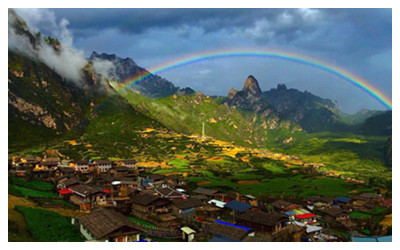 |
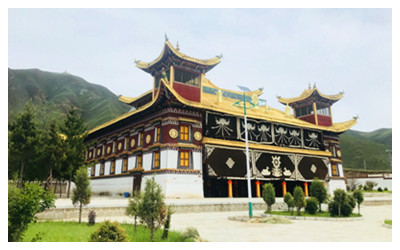 |
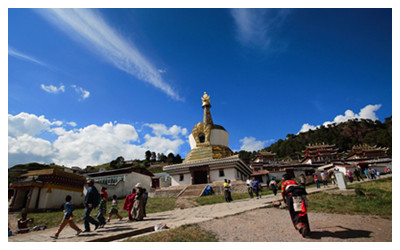 |
| Zhagana Scenic Area | Chanding Monastery | Langmu Monastery |
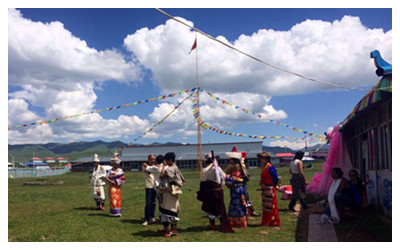 |
 |
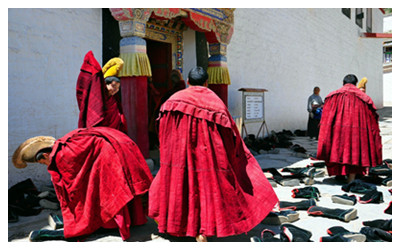 |
| Sangke Grassland | Gahai Lake | Labrang Monastery |
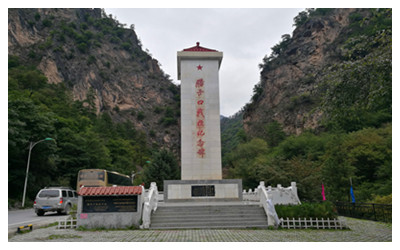 |
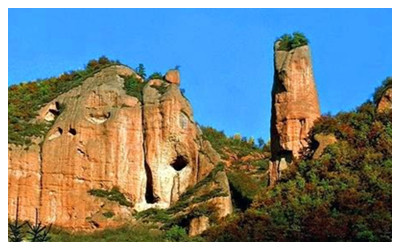 |
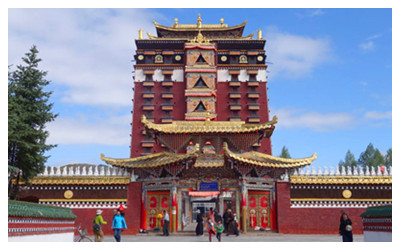 |
| Former Site of Lazikou Battle | Yeliguan Scenic Area | Milariba Buddha Pavilion |
When to visit Gannan?
Gannan has a continental plateau climate, featuring high altitude, humid and cold weather. The temperature varies greatly during the day but slightly among four seasons. Its annual average temperature falls around 1
 C-13
C-13 C .
C .June to August is the best time to visit. The temperature in this period maintains a level of 15
 C-30
C-30 C. The grassland scenery is at its best at this time. In winter, monasteries, no matter whether they are big or small, hold Buddhist ceremonies during the period from the eighth to the sixteenth day of the first lunar month. This is the busiest period.
C. The grassland scenery is at its best at this time. In winter, monasteries, no matter whether they are big or small, hold Buddhist ceremonies during the period from the eighth to the sixteenth day of the first lunar month. This is the busiest period.
How to get to Gannan?
Lanzhou is the main transfer station for south and southeast Gansu, whether by air, by train or by bus. Buses are the only vehicles to get in and out of Gannan. Visitors can find these buses at the New Lanzhou South Bus Station at the junction of No.212 National Highway and Lanzhou-Lintao (Dingxi City) Expressway.
In addition, buses to Xiahe County, Langmu Monastery, Maqu County, Diebu (Tewo) County are available in the south bus station in Lanzhou. As the seat of the prefecture government, Hezuo City has many regular buses to surrounding regions, such as Lanzhou, Linxia Hui Autonomous Prefecture, Dingxi City, Aba of Sichuan Province and Xining of Qinghai Province. The bus station is located in Xiyi Lu.
Gannan Tarvel Tips
Local Highlights: Xiangbala Tourism Arts Festival, held annually in midsummer, is the largest comprehensive tourism festival in Gannan Prefecture. During the fifth and the sixth lunar months, there are various festivals and ceremonies, such as Xianglang Festival, Erecting Arrow Festival and Caihua (Flower Picking) Festival.
Local Festivals: Apart from the traditional Tibetan festivals, it also has some special festivals for monasteries. For those who are interested in these Buddhist ceremonies, visitors can visit the Labrang Monastery during the third lunar month.
Special Local Products: Tibetan souvenirs, such as ornaments, embroidery, Tibetan herbs, silver wares, religious handicrafts
Useful Telephone Numbers:
Tourist Complaints: 0941-8212567
Weather Forecast: 121
Zip Code Inquiry: 184
China Post Branch: No.104, Renmin Jie, Hezuo City



 Ask Questions ?
Ask Questions ?